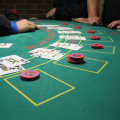The National Basketball Association (NBA) is a professional basketball league renowned for its athleticism and dynamic gameplay. Understanding the rules of the NBA can enhance your enjoyment of the game, whether you’re a seasoned fan or new to the sport. This comprehensive guide covers all the essential rules of the NBA, from the basics of gameplay to specific regulations.
The Basics of Basketball
The Court: An NBA court is 94 feet long and 50 feet wide, with a basket at each end. The court is divided into two main sections: the backcourt and the frontcourt.
Objective: The objective of the game is to score more points than the opposing team by shooting the basketball through the opponent’s hoop.
Quarters: An NBA game consists of four 12-minute quarters. If the game is tied at the end of regulation, it goes to overtime periods of five minutes each until a winner is determined.
The Gameplay
Teams: Each team has five players on the court at a time. Substitutions can be made during stoppages in play.
Tip-Off: The game begins with a tip-off, where the referee throws the ball up between two opposing players who jump to tip the ball to their teammates.
Dribbling: Players must dribble the ball while moving. If a player stops dribbling and then starts again, it’s a violation called double dribbling.
Shooting: Players score points by shooting the ball through the opponent’s hoop. A field goal is worth two points, or three points if shot from beyond the three-point arc.
Violations and Fouls
Traveling: Moving with the ball without dribbling. Results in a turnover.
Three-Second Rule: An offensive player cannot remain in the key (the area under the basket) for more than three seconds.
Backcourt Violation: After the ball crosses the midcourt line into the frontcourt, it cannot go back into the backcourt.
Personal Foul: Contact with an opponent that impedes their movement or play. A player is disqualified after committing six personal fouls.
Technical Foul: Unsportsmanlike conduct or violations by players or coaches. Can lead to free throws and possession for the opposing team.
Free Throws
Free Throws: Awarded after certain fouls. Each successful free throw is worth one point.
Bonus Situation: After a team commits a certain number of fouls in a quarter, the opposing team is awarded free throws for each subsequent foul.
Time-Related Rules
Shot Clock: Teams have 24 seconds to attempt a shot that hits the rim. If they fail, it’s a shot clock violation.
Game Clock: The clock stops during dead balls, fouls, and timeouts. It runs continuously during live play.
Timeouts: Each team is allowed a certain number of timeouts per game, which can be used to stop the clock and strategize.
Overtime
Overtime: If the game is tied at the end of regulation, it goes to a five-minute overtime period. The process repeats until a winner is determined.
Officials
Games are officiated by a crew of referees who enforce the rules, call fouls and violations, and ensure fair play.
Understanding these rules is crucial for fully appreciating and enjoying the National Basketball Association. As you watch or play the game, keep these guidelines in mind to deepen your understanding of this exciting sport.





